Easter Eggers: A Favorite Rainbow Egg Layer
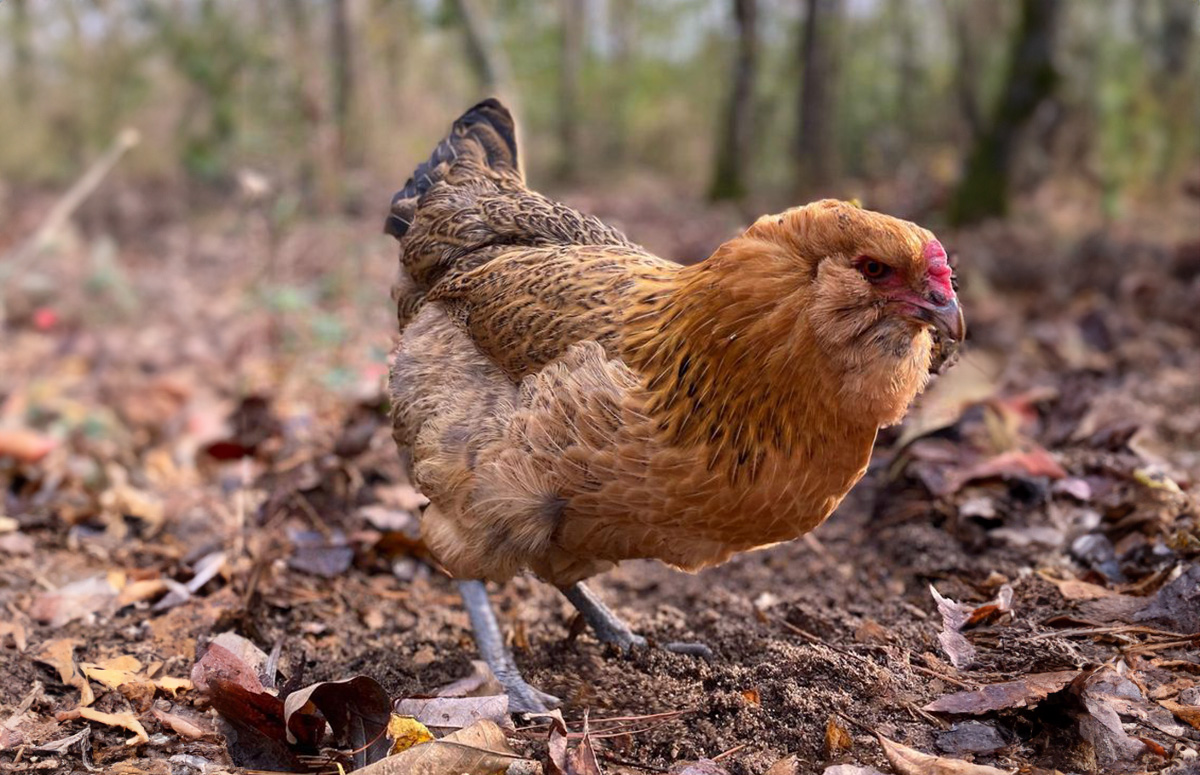
Are you looking to add some colorful charm to your flock? Meet the Easter Egger, the quirky and vibrant chicken that lays a rainbow of eggs. Their unique personalities and flair will surely brighten up your day and egg carton.
- Easter Eggers lay up to 4 to 5 eggs weekly
- Hybrid mix of a blue egg layer and brown egg layer
- They lay a rainbow of colors including blue, green or pink
- Friendly and docile nature
| Eggs | Up to 280 eggs/year |
| Egg Color | Blue, green, pink, gray, pastel,… |
| Egg Size | Medium to large |
| Weight | 5.5 – 6.5 lbs |
| Hardiness | Cold and heat |
| Temperament | Friendly |
| Beginner-friendly | Yes |
| Color | Varies |
Characteristics
Are you thinking about adding a little color to your coop? Easter Egger chickens may be the right choice for you and your family!
It is one of the only chickens that lay a potential of different colored eggs, from blue, green, pinkish brown to yellow. You can create a rainbow of colors from one small flock in your egg basket.
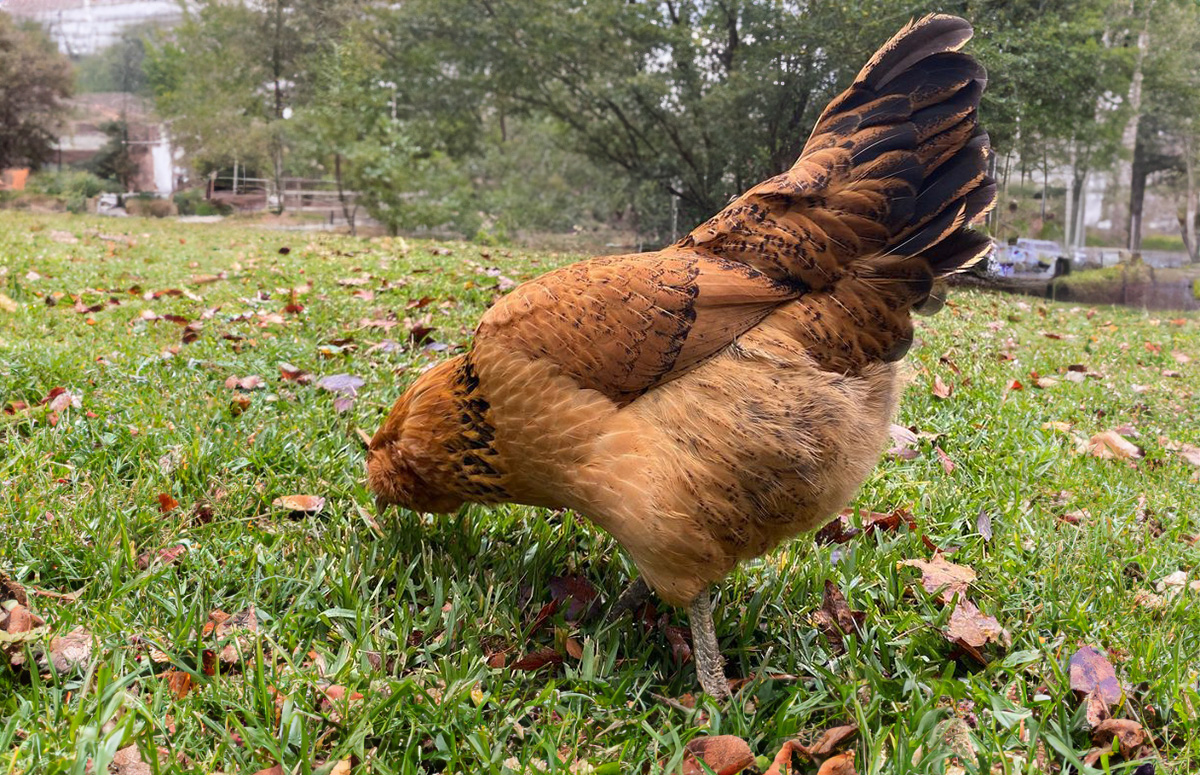
Easter Eggers are not a pure breed of chicken. They lay multi-colored eggs because they are a cross between a blue egg layer with the oocyan gene and a brown egg layer, and are, therefore, a hybrid.
Easter Eggers are special but difficult to distinguish because they can have a wide range of feather colors. That said, there are some differentiating features you can use to determine their heritage.
- They usually have small or absent wattles.
- They usually have a pea comb. The blue egg gene is connected with the pea-comb gene! But alternatively, they can have a single comb.
- Their ears are likely white or red, another close link to the blue egg gene.
- They often are muffed or bearded. Some may have ear tufts, though this trait is more rare.
- Skin color on their feet might be olive or grayish.
- They are on the small side.
- Most breeders praise them as suitable species for children because they are friendly and easy to care for.
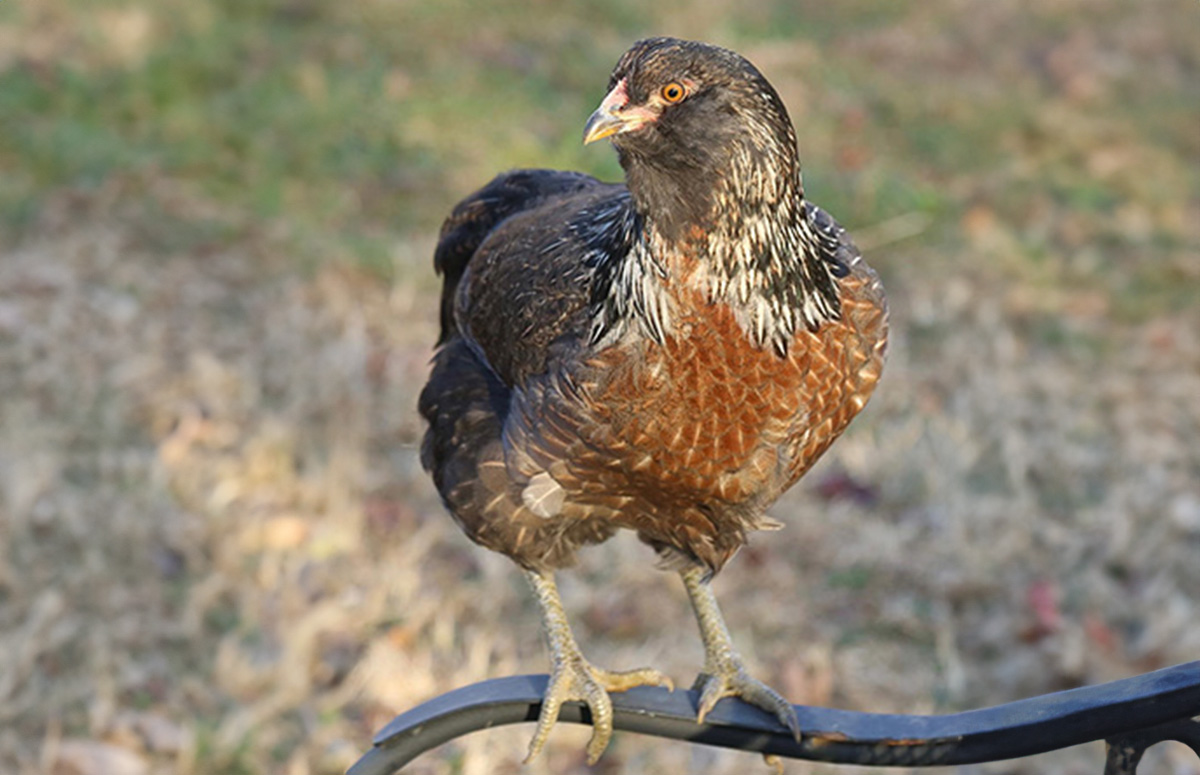
Easter Eggers – Also Not to Be Confused With…
Olive Eggers!
These are technically the same kind of hybrid as Easter Eggers, a mix between a blue-laying variety and a brown-laying variety. However, Olive Eggers only produce a variety of olive or avocado-colored eggs and may be a bit larger than other Easter Eggers.
What’s the difference between an Olive Egger and an Easter Egger?
Olive Eggers are a type of Easter Eggers that lays olive-colored eggs. So Olive Eggers are always Easter Egger, but not all Easter Eggers are Olive Eggers. Just like all lemons are yellow, but not everything yellow is a lemon.
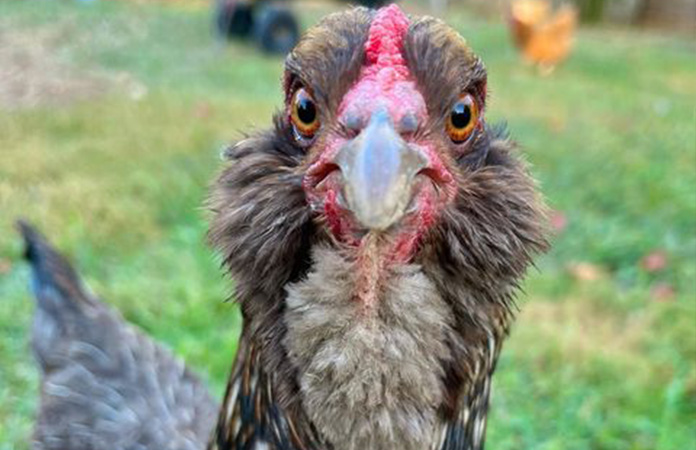
Technically, their egg is a blue egg with a brown pigment coating. According to the Michigan State University Extension, Ameraucana chickens deposit the blue pigment oocyanin while the egg is being produced, permeating the inside and the outside of the shell.
Chickens that lay brown-tinted eggs deposit the pigment protoporphyrin later in the eggshell formation process, coating only the outside. So when the brown pigment coats a blue egg, it makes a shade of olive. The darker the brown pigment, the deeper the olive color.
How Do I Get an Easter Basket of Different Colors?
If you are hoping for various egg colors, you want to make sure you purchase some different Easter Eggers with a known variation of egg colors. It’s also worth noting that hens only lay one color of eggs throughout their lifetime, so keeping multiple Easter Eggers is key to having a colorful egg basket.
If you just have one Easter Egger in your flock, she will lay one shade. Most lay a green or blue hue, with pinkish and yellow cream hues possible.
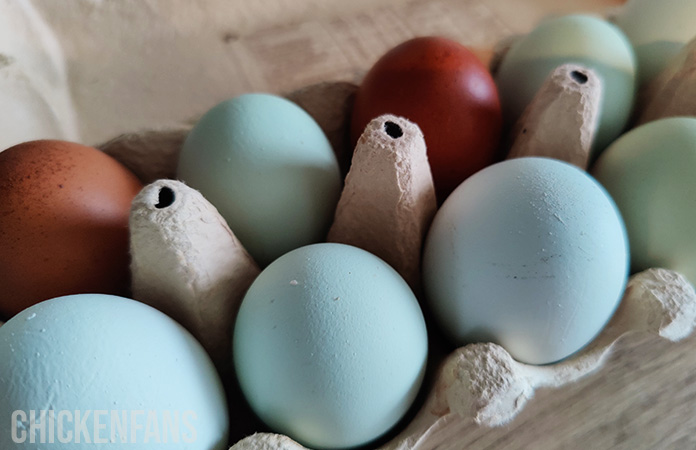
Easter Eggers are easy to find and are widely available. You can purchase day-old chicks or pullets from different hatcheries or local farms and form your flock.
Egg Production
Easter eggers produce a good amount of eggs, between 200 – 280 eggs per year. That’s around four to five eggs per week. They will probably start laying at around seven months. That is fewer eggs at older start age than other laying varieties, but you can rely on consistency.
One great feature, especially if you are looking for friendly pets for your family, is that they have an above-average life span and are hardy. The average lifespan is 8 years. Some live as long as 10 years or more!
If you or your children are likely to become attached to the individuals in your flock, the Easter Egger is a good choice.
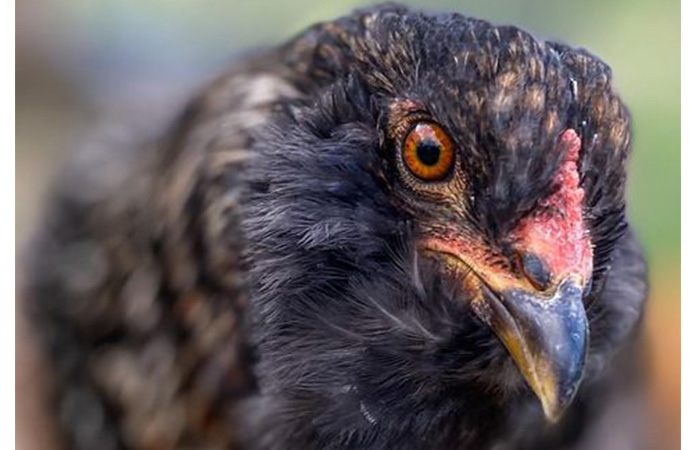
So, while they may not produce as many eggs as other hybrids, you can rely on a consistent supply of around 4 large eggs a week, for up to 5 to 6 years, for low stress and care. Easter Eggers are noted as decent meat birds too.
Easter Egger Personality
They are a popular family breed because they have a docile, sweet temperament and serve as great mothers to their children and yours. Easter Eggers are even known to sit on their owner’s lap for a bit of affection. They are great companions if you have kids running around.
Owners often report that they enjoy human company to the point that they will greet them at the coop door at feeding time or egg gathering time and seek a pat or snuggle.
The only downside is that you must avoid caring for them with more assertive chicken breeds, like Rhode Island Reds. Since they are smaller birds, only averaging 4-5 pounds, and they are so friendly, a fiercer chicken might bully them.
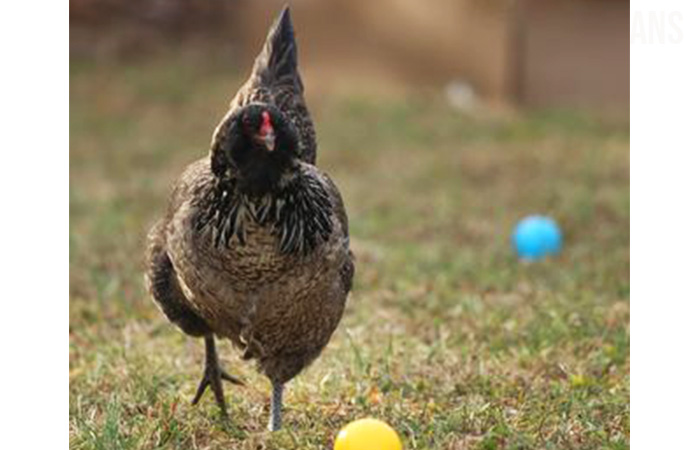
Easter Eggers love to free-range and are active chickens. They need plenty of space to roam around if you don’t let them free range.
Hardiness
Easter Eggers are frost-bite hardy and do well in the cold or the heat. This makes them an ideal bird for any climate, especially if you have varying seasons.
They enjoy both an indoor coop and an outside foraging space, so you have options of where to keep them. The best guidance is to make sure you have at least 4 square feet of space per bird, and they will be happier with a lot of outdoor space.
They can fly, but they tend to keep with their flock. This means you do not have to worry about them flying over your fences. It is always a good idea to install wire covering on your run space or an automatic chicken door to the coop, regardless, to keep the predators away and ensure your flock is safe.
Make sure you have a space for your egg layers to feel comfortable laying. A box a bit off the ground for every four hens will work nicely.
Pros and Cons of the Easter Egger
If you still can’t decide, here are the top pros and cons of including Easter Eggers in your flock:
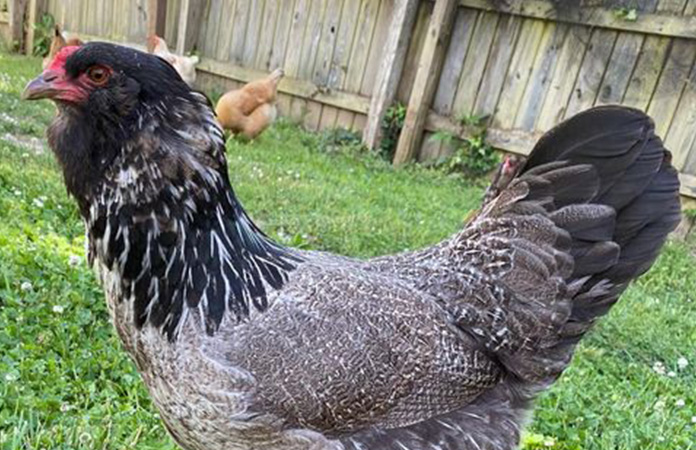
Pros:
- Great for families.
- Fun and interesting egg colors.
- Low maintenance.
- Inexpensive.
- Decent egg producers.
Cons:
- Lower egg productivity, later stage production.
- Not great for meat.
- Not a pure breed.
If you do think you want to try out Easter Eggers, you can find them fairly easily. You can also find specific varieties that are bred for exceptions. The Fibro Easter Egger is a pure black designer version with a special pigment variation to make all of its skin and most of its feathers black. It still lays a rainbow of egg colors though, just like its “common” Easter Egger cousin!
Summary
The Easter Egger is known for its vibrant personality and ability to lay pastel-colored eggs in various hues. Unlike purebred chickens, Easter Eggers don’t breed true. To obtain a diverse range of egg colors, it’s important to purchase multiple Easter Eggers known for their variety of shades. These friendly and charming birds are easy to find and make a great addition to any backyard flock.
If you want to learn more about chicken breeds that lay colored eggs, check out our article ‘10 Popular Chickens With Colored Eggs‘. Or go to our listicle breed summary on ‘The Classroom‘, or, if you’re unsure where to start, take a look at our ‘Chicken Breeds: Ultimate Beginners Guide‘.






















